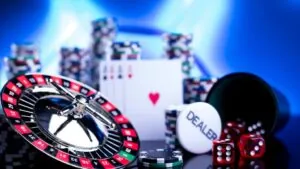When Netflix’s “Squid Game” exploded onto the global scene, it wasn’t just its visceral violence or sharp social commentary that captivated audiences. Beyond the shocking twists, the series presented a brutal, real-world laboratory for game theory and probability. Each seemingly simple children’s game was transformed into a deadly strategic puzzle, forcing desperate players to make agonizing decisions under unimaginable pressure. The show became a fascinating study in human behavior when faced with extreme scarcity, betrayal, and the ultimate stakes: life or death.
The genius of “Squid Game” lies in its ability to strip away societal norms and expose the raw calculations that emerge when survival is on the line. Players are constantly weighing their options, assessing the probabilities of success, and strategizing not just against the game masters, but against each other. From the very first game to the last, every decision is steeped in the principles of game theory—the mathematical framework for analyzing strategic interactions where the outcome of one’s choice depends on the choices of others.
The Universal Nature of Strategic Choice
The principles demonstrated in “Squid Game” are not limited to fictional death games; they are fundamental to how we make decisions in competitive environments with uncertain outcomes. Understanding probability and strategic thinking is crucial in many real-world scenarios. For instance, players navigating the diverse offerings on platforms like the Slotoro Casino apply similar calculations, albeit with far lower stakes. Whether choosing a slot with higher volatility for a chance at a bigger payout or deciding on a specific blackjack strategy, they are implicitly using game theory to manage risk and maximize potential returns. This shows that strategic thinking is a universal skill, adaptable to any game with rules, risks, and rewards.
Anatomy of the Games: A Strategic Breakdown
Each game in the series served as a masterclass in a different aspect of game theory and probability, progressively increasing in psychological and strategic complexity.
Red Light, Green Light: A Lesson in Cumulative Risk
The first game immediately introduced the harsh realities of the competition. While seemingly a test of timing, it was a brutal lesson in cumulative probability. Each step taken was a small risk, but over the course of the game, the probability of making a fatal mistake increased dramatically. The initial chaos showed a lack of strategic thinking, but surviving players quickly learned to observe, adapt, and manage their individual exposure by using other players as human shields.
Tug-of-War: The Power of Cooperative Strategy
“Tug-of-War” was a brilliant puzzle that emphasized the power of collective strategy over brute strength. Player 001, Oh Il-nam, articulated a winning game plan that involved optimal team composition, rhythm, and psychological warfare. This game was a clear example of cooperative game theory, where each individual’s best move contributes to the team’s success. It proved that a weaker team with a superior strategy and unwavering trust could defeat a stronger, disorganized opponent.
The Glass Bridge: A Probabilistic Nightmare
Arguably the most psychologically grueling game, the “Glass Bridge” was a pure exercise in sequential probability and self-sacrifice. With 18 pairs of panels, the probability of crossing safely by pure chance was infinitesimally small (1 in 2^18, or 1 in 262,144). The only way to succeed was for players at the front of the line to sacrifice themselves to reveal the safe path for those behind. This created a horrifying variant of the “Ultimatum Game,” exposing the moral calculus of survival and highlighting the “free rider” problem, where the optimal individual strategy (being last) is entirely dependent on the forced sacrifices of others.

Game Theory Elements Throughout the Series
The strategic depth of “Squid Game” can be seen in every challenge. The following table provides a concise overview of the core game theory principle at play in each game and the key strategic lesson it taught.
| Game | Core Game Theory/Probability Principle | Strategic Takeaway |
| Red Light, Green Light | Individual risk assessment, cumulative probability. | Manage individual exposure, observe and adapt. |
| Dalgona (Honeycomb) | Risk-reward, skill vs. luck, information asymmetry. | Choose the option with the highest probability of success (the triangle). |
| Tug-of-War | Cooperative game theory, optimal team composition. | Collective strategy, diverse skills, and trust trump brute force. |
| Marbles | Zero-sum game, betrayal, emotional manipulation. | Deception is paramount; emotional bonds are a strategic weakness. |
| Glass Bridge | Sequential probability, “Ultimatum Game” variant, sacrifice. | Positional advantage is everything; fear cripples rational decision-making. |
| Squid Game | Exhaustion, psychological warfare, seizing the final opportunity. | In the end-game, it’s about exploiting a single moment of advantage. |
This table illustrates how the games were not random tests of luck but a deliberately designed curriculum in the brutal logic of survival. Each game stripped away another layer of social cooperation, forcing the players to adapt their strategies from teamwork to pure, individualistic self-preservation.
The Human Cost of Game Theory
“Squid Game” provided a chilling, yet brilliant, exploration of game theory and probability in extremis. It demonstrated how fundamental mathematical and strategic principles can dictate human behavior when stakes are absolute. The show stripped away layers of civilization to reveal the raw decision-making processes, the desperate calculations of risk and reward, and the agonizing choices between cooperation and ruthless self-preservation. It serves as a stark reminder that while game theory can predict optimal outcomes, the human element—fear, greed, empathy, and hope—ultimately determines who survives and who falls. The show’s enduring popularity confirms our fascination with these cold, logical puzzles, especially when played out against the most intense backdrop imaginable.


























































